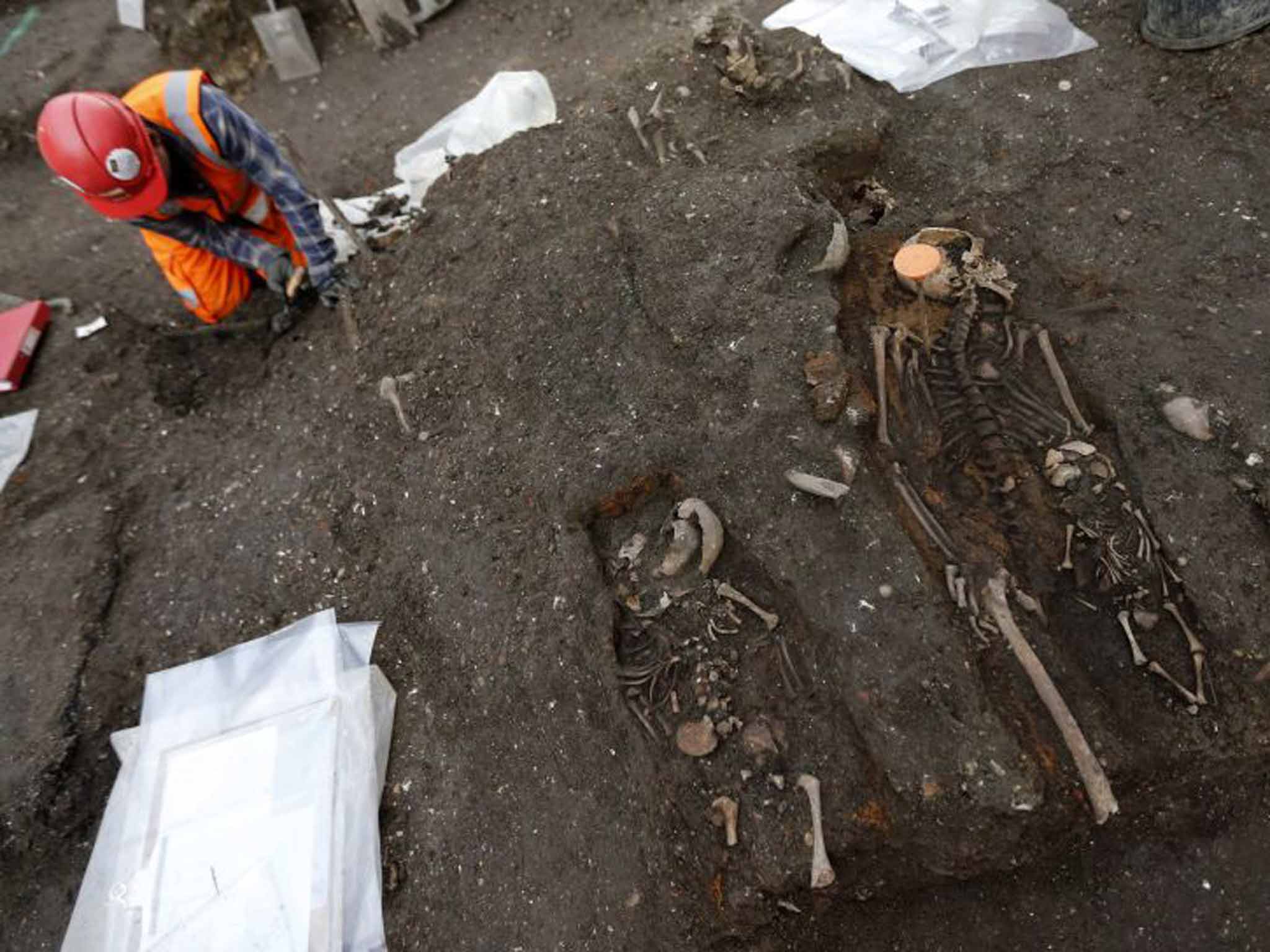Bedlam's burial ground: Does it hold clues to the plague?
Archaeologists' latest excavations could unearth the truth about the disease that consigned so many Londoners to early graves. Cahal Milmo digs in

As the thrum of London commuters faded yesterday morning, another noise took its place. Behind hoardings in a corner of the City could be heard the scratching of trowels, unearthing the lives – and often excruciating deaths – of Londoners from 400 years earlier.
A few hundred metres from Liverpool Street station, the most thoroughgoing attempt yet to understand what life was like for 16th- and 17th-century inhabitants of the capital – in particular those at the lower end of the social scale – was getting under way with the excavation of 3,000 skeletons from the Bedlam burial ground.
The construction of a ticket hall for London's £14.8bn Crossrail project has provided a unique opportunity for experts to strip away the bygone layers of the metropolis in their search for the past. For the next seven months, a team comprising archaeologists, bone experts and microbiologists will gather evidence ranging from floor tiles to pulp from the core of old teeth to build up a picture of ordinary Londoners' lives in the Tudor and Stuart eras – and maybe even further back.
The dig, which is focused on an area roughly the size of two tennis courts, sandwiched between the remains of an Edwardian public loo and the concrete pilings for the 21st-century infrastructure of Crossrail, began in earnest yesterday after almost a decade of preparatory work. Sheltered by a large plastic awning, in the shadow of the London headquarters of Swiss banking giant UBS, about a dozen staff were painstakingly easing away the dark soil from protruding skulls and bones, browned and compressed by the passage of time, along with artefacts ranging from Roman coins to beef bones polished smooth use as ice-skates. Thousands of Londoners were interred here between 1569 and 1738; and although the "burial layer" would once have been several metres deep, it now measures just 1.5 metres.
However, it is in this earthy time capsule that Nick Elsden, the project manager for Museum of London Archaeology, hopes to unveil some secrets of the daily life and traumatic events in the capital's history: randomly chosen skeletons from various points will taken to a laboratory for state-of-the-art analysis, looking for clues such as wear and tear on bones, and samples of DNA.
One particular aspiration is to identify the "plague pits", where mass burials took place during the Great Plague of 1665, in order to track the evolution of yersinia pestis – the bacteria responsible for the disease that stalked London for centuries and then abruptly died out. As Dr Elsden says: "The science of DNA has developed to the extent that we can look for traces of illnesses from the material inside teeth. If we can find bodies from the 1665 outbreak, we can understand the evolution of the disease from the medieval era. That sort of information is not just academic; it could help with combating the disease in places where it still occurs today."
One thing that happens less today is the mistreatment of psychiatric patients. However, despite taking its name from the nearby – and infamous – Bethlehem Hospital, which housed the mentally ill, the Bedlam burial ground does not contain the remains of many of the asylum's residents. Instead, it served as an overflow cemetery for several parishes on the eastern edge of London, accommodating 20,000 bodies of ordinary citizens, from servants to watermen, as well as many of the capital's dissidents and free thinkers.
Among the remains that archaeologists believe they have a chance of identifying (albeit a slight one, since they are excavating only a small portion of the original site) are those of Robert Lockyer, the Leveller radical whose democratic beliefs led to him being executed by a musket-wielding firing squad in 1649, and the herbalist Nicholas Culpeper, who was dogged by allegations of witchcraft in his lifetime.
Also, once the burial layer has been stripped away, and its occupants re-buried in consecrated ground in Essex, the site offers a tantalising chance to cast new light on the Roman city of Londinium.
But ironically, as the archaeologists beaver away in search of London's ancient tales, the exposure of this treasure trove comes at the expense of it eventually disappearing to make way for the capital's transport system.
At least, for the next few hundred years.
Join our commenting forum
Join thought-provoking conversations, follow other Independent readers and see their replies
Comments
Bookmark popover
Removed from bookmarks